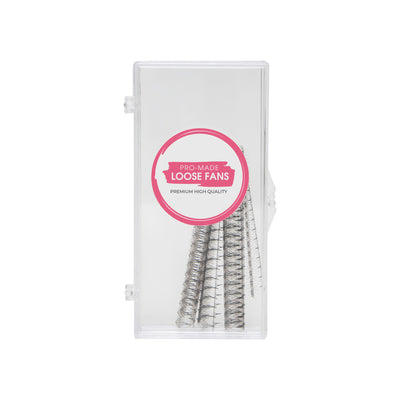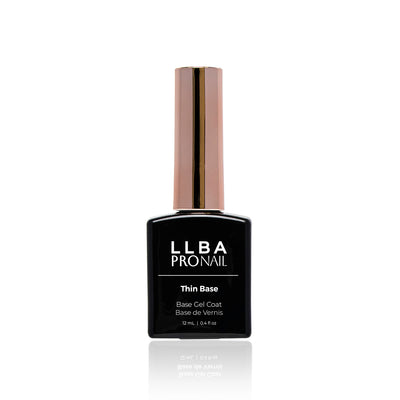Retention tips for eyelash extension refills
A lot of first-time clients who get eyelash extensions think that once a couple of eyelashes start falling off, they need to have the entire set removed and a fresh one applied. NO! That is not the case my friends!
That process requires a lot more time from you, as a lash artist, and more money for the client! Which I’m sure no one wants. During the consultation or after their set is completed, would be the perfect opportunity to educate your client on lash refills and the lash-shedding cycle.

On average, a person can lose up to 1 to 5 eyelashes per day which is about 35 lashes! If you convert that to how much that would be on an eyelash extension set, that's about 20%. The lash shedding cycle has four phases:
- Growth Stage: This is the "baby" stage and the natural lashes are thin, weak, and lack strength. Attaching synthetic lashes to the natural lashes during their initial growth phase will lead to a lack of growth.

- Anagen Phase: As the eyelashes emerge through the surface of the skin, they grow thicker and longer. At this stage, the lashes exhibit some strength and can appear thicker. It is possible to apply lash extensions at this stage, but since they are actively growing, they can grow out fast and create an uneven look.
- Catagen Phase: This phase is when the natural eyelashes stop growing. This stage is ideal for attaching an eyelash extension.
- Telogen Phase: During this in-between phase between eyelashes, a new one is beginning to grow, so adding extensions to this natural lash should be avoided since they are not as durable and will fall off quicker.
So what is an “eyelash extension refill”? The name itself gives you an idea of what the process is. You are basically “refilling” all the spots where lash fans have fallen out or where fans have outgrown the natural lash. It is important to note that good aftercare done by the client should be practiced at all times to ensure that their lashes are in pristine condition and the state of their lashes has not affected the natural lash-shedding cycle.

There are many different reasons other than natural lash-shedding that can affect a client’s lashes falling out such as: not cleansing the lashes daily, picking the natural lashes, improper lash application, your glue was working too fast for you, etc. Nonetheless, it is our job as lash artists to continue to educate and practice proper lashing techniques so we can avoid retention issues as much as possible.
How long do your clients need an eyelash extension refill?

Typically we tell our clients that they should have 40% of their lashes still intact to be considered for a “refill”. In about 3 weeks, the eyelash extension bond will become weak, thus we don't recommend refilling them after the 3-week mark as it's very likely that quite a few will fall out over the next week.
This is why we recommend you schedule a refill within 3 weeks of having your extensions applied so that you get the most value for your money. After that, we recommend a new set to ensure your eyelash extensions last as long as possible. Completing a new set is always under the lash artist’s discretion. If you can see that your client’s previous set is still fairly full, with little to no outgrown lashes, the lash application was flawless, then there would be no reason for you to remove the previous set.
Retention tips for eyelash extension refills
When working through a lash refill, there are a couple of different techniques to go about doing so. For example, you can remove all the outgrown lashes first.

Remove the outgrown lashes first
One of the most effective ways to remove an outgrown lash is the “banana peel” method. This requires you to evaluate a client’s lashes and remove the extensions that are further than 2mm away from the lash line. As you hold your client's natural lash with tweezers, use another pair of tweezers to gently peel the overgrown extension off. Remember to only use this method when the extension has lifted from the base and can be removed easily. Make sure that once you’ve removed the lash extension, you clean off any residual glue still on the natural lash. You still want to be able to work with clean lashes when you are performing a refill.
Once the outgrown lashes are removed, follow the same steps as usual, such as pre-treatment, eye pads, mappings, lash application, and post-treatment steps.

A great way to expose those natural lashes is to pull the lashes upwards and start lashing in layers. You can use tape (sensitive tape) or a gel pad to pull the lashes back. Since the lash extensions are longer than the natural lash, this will allow the natural lashes to poke out and easier to view and place a lash extension on.
When full sets are done correctly, and the client hasn’t waited too long in-between fills makes the lash artist’s work easier once it comes time for a refill. Making sure your client is adhering to the proper eyelash aftercare protocol is an important way to ensure your client’s lashes are healthy and ready for a refill.





















Leave a comment